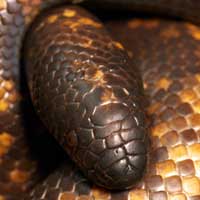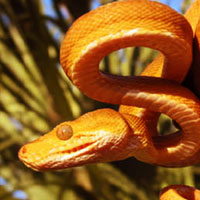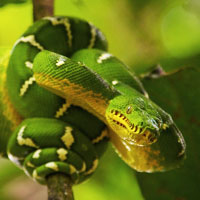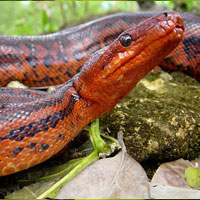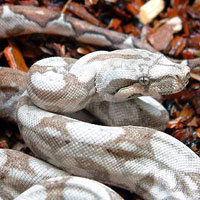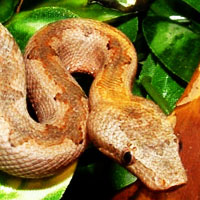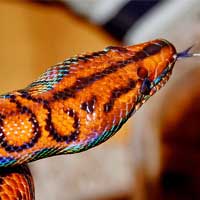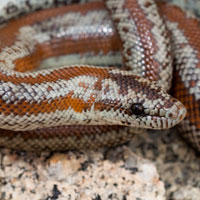Boa Constrictors: The Ultimate Guide to These Majestic Snakes
The scientific name of boa constrictors is Boa constrictor. They belong to the snake family Boidae, which includes large, non-venomous constrictor snakes such as anacondas and pythons.
Scientific Name: Boa constrictor
Snake Family: Boidae
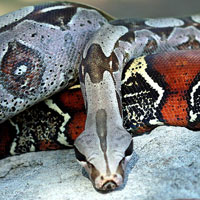
Introduction
Boa constrictors are one of the most well-known snake species in the world. Known for their incredible size, strength, and unique hunting method of constriction, these reptiles are both fascinating and formidable. In this comprehensive guide, we'll explore everything you need to know about boa constrictors, from their habitat and diet to their behavior and care. Whether you're a reptile enthusiast, prospective snake owner, or simply curious about these impressive creatures, read on for all the details.
Boas are renowned for their robust build, striking patterns, and ability to kill prey by constriction, making them one of the most recognizable species in the reptile world.

Boa Constrictor Habitat: Where Do These Snakes Thrive?
Common Habitats of Boa Constrictors:
| Region | Habitat Type | Key Features |
| Central and South America | Tropical Rainforest | High humidity, dense foliage, abundant prey |
| Northern Mexico | Arid to semi-arid regions | Dry terrain, scattered vegetation |
| Caribbean Islands | Coastal and forested areas | Moderate humidity, proximity to water |
Boa Constrictor Diet and Feeding: What Do These Snakes Eat?
Boa constrictors are carnivores and their diet consists of a variety of small to medium-sized animals. They use their powerful bodies to coil around their prey, suffocating it before consumption. Their prey is typically swallowed whole.
In the wild, boa constrictors will eat:
- Small mammals such as rodents
- Birds and lizards
- Occasionally, other snakes or amphibians
In captivity, boas are typically fed a diet of pre-killed mice, rats, and rabbits, depending on their size and age. Baby boas can start with small mice, and as they grow, their food size increases accordingly.
Feeding Frequency:
- Juvenile boas: Every 5-7 days
- Adult boas: Every 10-14 days
Proper feeding is crucial to a boa’s health, and overfeeding can lead to obesity, which is a common issue in captive boas.
Boa Constrictor Behavior and Temperament: What You Should Know
Despite their fearsome reputation, boa constrictors are typically docile and can make excellent pets when properly cared for. In the wild, they are solitary animals, coming together only during mating season.
Some key behaviors to note:
- Nocturnal Activity: Boa constrictors are generally more active at night, though they may also hunt during the day.
- Territorial: While not overtly aggressive, wild boas can be territorial and defensive when threatened.
- Curiosity: Captive boas often display curious behavior, especially when being handled by their owners.
Most boa constrictors do not pose a threat to humans and will only bite if provoked or handled improperly.
Boa Constrictor Health and Lifespan: Ensuring a Healthy Snake
Common Health Issues in Boa Constrictors:
| Health Issue | Symptoms | Prevention/Action |
| Respiratory infections | Parasites (mites/ticks) | Obesity |
| Wheezing, mouth gaping | Visible parasites, lethargy | Lack of mobility, bloating |
| Maintain proper humidity and temperature | Regular enclosure cleaning and vet checks | Balanced feeding schedule |
Boa Constrictor Reproduction: Understanding Their Breeding Cycle
Boa constrictors are ovoviviparous, meaning they give birth to live young rather than laying eggs. Breeding typically occurs in the dry season, followed by a gestation period of about 5-7 months.
Reproduction Facts:
- A single litter can contain anywhere from 10 to 60 offspring.
- Baby boas, called neonates, are fully independent and capable of hunting right after birth.
- Males use their vestigial pelvic spurs to stimulate females during mating.
Breeding boa constrictors in captivity requires careful planning, including controlling the temperature and environment to mimic seasonal changes.
Boa Constrictor Handling and Care: A Guide for Owners
Handling a boa constrictor can be an exciting experience, but it’s important to do so correctly to avoid stress for both the snake and handler. Boas are strong animals, and they rely on a secure grip when being held.
Handling Tips:
- Support the snake’s body, especially its middle and rear sections.
- Avoid sudden movements, as this can startle the snake.
- Wash hands before and after handling to avoid transferring bacteria or chemicals.
In terms of care, boas need a well-maintained enclosure with the proper heat, humidity, and space to thrive. A large terrarium with a heat gradient, fresh water, and regular cleaning will ensure your boa stays healthy.









